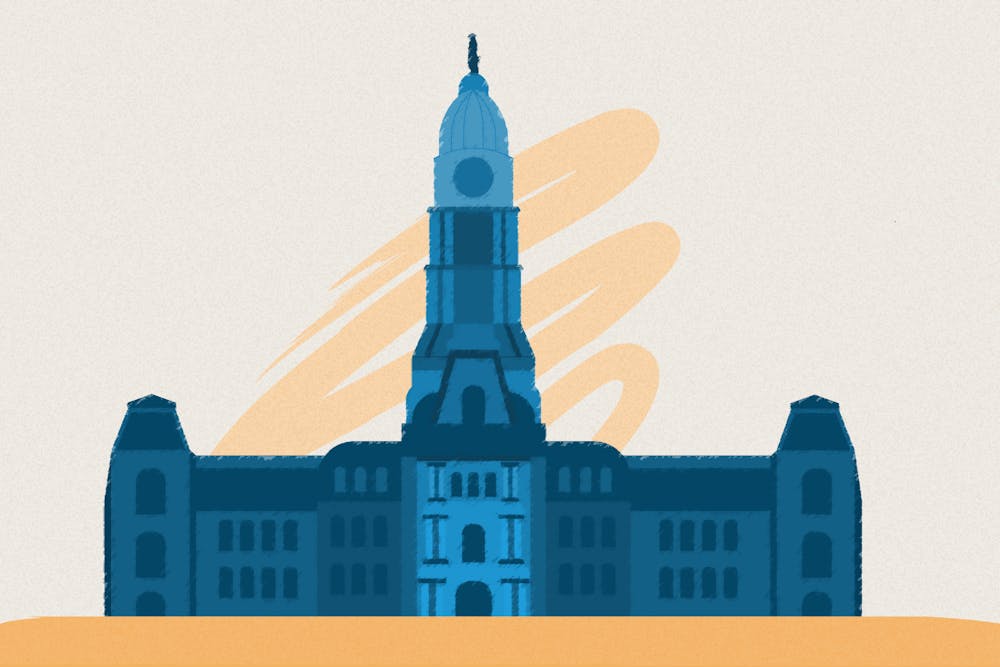Amid the COVID–19 pandemic, the severity of the housing and rent crisis in the United States is only increasing. There's a dire lack of affordable housing and rent for tenants across the country. As the pandemic continues to unemployment and loss of income for many, the rent crisis has come to the forefront of our collective consciousness.
Pennsylvania is one of the 13 states where renters are most distressed by delinquent rent, with over 19% of renting households behind on monthly payments. In Philadelphia, housing disparities that existed prior to the pandemic have only worsened. A February 2021 report from Community Legal Services of Philadelphia found that landlords who filed for eviction were targeting Black tenants in North and West Philadelphia. This—coupled with the fact that 47% of all COVID–19 deaths in Philadelphia were Black residents—indicates that the Black community is being hit the hardest by the pandemic.
Although the pandemic has significantly exacerbated the disparities in housing between Philadelphia’s white and Black communities, these differences have existed for decades. The nation and Philadelphia’s history of housing discrimination—and subsequent housing crisis—is rife with anti-Blackness in physical, psychological, and legal modes.
The housing crisis begins its inception with Jim Crow laws and segregation, following the tail end of Reconstruction. The infamous “separate but equal” notion took a foothold in the American South, imposing severe restrictions for Black people in avenues such as voting, employment, and holding office—but also housing. Jim Crow restrictions prevented Black people from migrating and residing in certain towns, while “sundown towns” actively worked to expel Black people from their homes through extremely violent measures.
In addition to racist intimidation, legal violence and discrimination were also part and parcel of housing discrimination against Black residents. Racist zoning laws such as single–family zoning and redlining processes were used to deny Black people housing. These policies placed restrictions on homeownership; housing deeds excluded Black people and low–income residents from moving to certain neighborhoods. Zoning laws that were intended to separate residential from commercial retail were instead utilized to segregate multiracial cities.
Although explicit racial zoning was ruled unconstitutional in 1917, its effect on present–day housing is felt clearly by the Black community. Single–family housing can be understood as the traditional image of columns of American homes encased by white picket fences. The single–family zoning designation prevents apartment buildings, duplexes, and triplexes from being built, and as a result, limits who can live in these spaces. Under the guise of comfortability, homeownership costs push out “undesirable” populations from these areas.
The legacy of single–family zoning continues to exhibit a racialized impact in Philadelphia. City council members have been reluctant to upzone commercial corridors in the city’s fastest–growing neighborhoods, despite recommendations by our city's Planning Commission to phase out single–family zoning in areas with increasing real estate prices. The result has been rampant gentrification and displacement of long–time, low–income residents who are priced out of their homes and unable to move elsewhere in the city due to the low housing supply.
With the CDC’s rent moratorium—which prevents landlords from charging late fees, filing for non–payment—coming to an end on October, the future for tenants across the country looks bleak. As the effects of the pandemic compound against Philadelphia residents, the question becomes clear: What can be done to redress this crisis?
The answer lies in the hands of redistributing wealth and resources. This comes from two potential avenues: the federal government and the University of Pennsylvania.
In an Op–Ed for the The Philadelphia Inquirer written by Claudia Aiken, director of the Housing Initiative at Penn, she indicates that local government is insufficient to remedy the crisis. Instead, the federal government needs to make the housing safety net permanent, and the housing crisis a national priority.
This is definitely the case, but it seems unlikely when or to what extent the federal government will begin implementing such a plan.
As the largest private landowner in Philadelphia, Penn is poised to play a defining role in the city’s housing crisis. Currently, Penn’s involvement in alleviating housing injustice consists of the Housing Initiative at Penn, Penn Homeownership Services, and Penn's Neighborhood Preservation and Development Fund (NPDF).
The Housing Initiative at Penn does great work consulting with cities to create housing plans in Cleveland, Cincinnati, and Philadelphia as well as academic research regarding voucher lotteries and housing access for Asian and Latinx families. HIP implemented the Housing for Equity plan to address homelessness and eviction, production and preservation, affordable, workforce, and market–rate housing.
Penn Homeownership Services (PHS) provides a Forgivable Loan Program and a Closing Cost Reduction Program. The mission of PHS is committed to “maintaining a diverse, safe and thriving urban community.” However, this doesn't seem to be the case. PHS only services University, employees and its requirements can alienate some of its most vulnerable employees like maintaining a minimum credit score of 630.
Similar to PHS, Penn’s Neighborhood Preservation and Development Fund offers leases for apartments under the supposed claim of “affordability.” The rent for their 400 apartments ranges from $800—$1600. According to the Pew Charitable Trusts, the median rent range in Philadelphia ranges from $903-$1,127, which is unaffordable to many of the city’s lowest–income residents. These price points include one– and two–bedroom apartments that aren’t sufficient to house entire families.
In essence, the University’s commitment to urban wellness falls apart under any real investigation into what is necessary for low–income residents actually residing in Philadelphia. These two programs are the only strategic initiatives offered by the Office of the Executive Vice President.
To positively contribute to the West Philadelphia community, the University should modify these initiatives to actually reflect what’s necessary and feasible for low—income residents. Furthermore, the University should agree to reserve 15% of building capacity in every new residential development for affordably priced units. These units would be exclusively for West Philadelphia residents not affiliated with our campus, and would be priced so that a family making a quarter of the city’s median income could afford the monthly rent.
Additionally, the University should agree to donate 20 acres of land to the city by 2050, with the intention of allowing the city to develop the area with affordable housing. Lastly, Penn should annually contribute at least 2% of the endowment to Philadelphia mass transit and affordable housing projects.
Penn has an obligation to its community, and fighting against housing injustice, especially in the middle of the pandemic, should be one of their top priorities.
Correction: An earlier version of this article attributed the median rent range in Philadelphia to a report from the Pew Research Center, when the data originated from a Pew Charitable Trusts report. The article has been updated to reflect this change. Street regrets this error.







